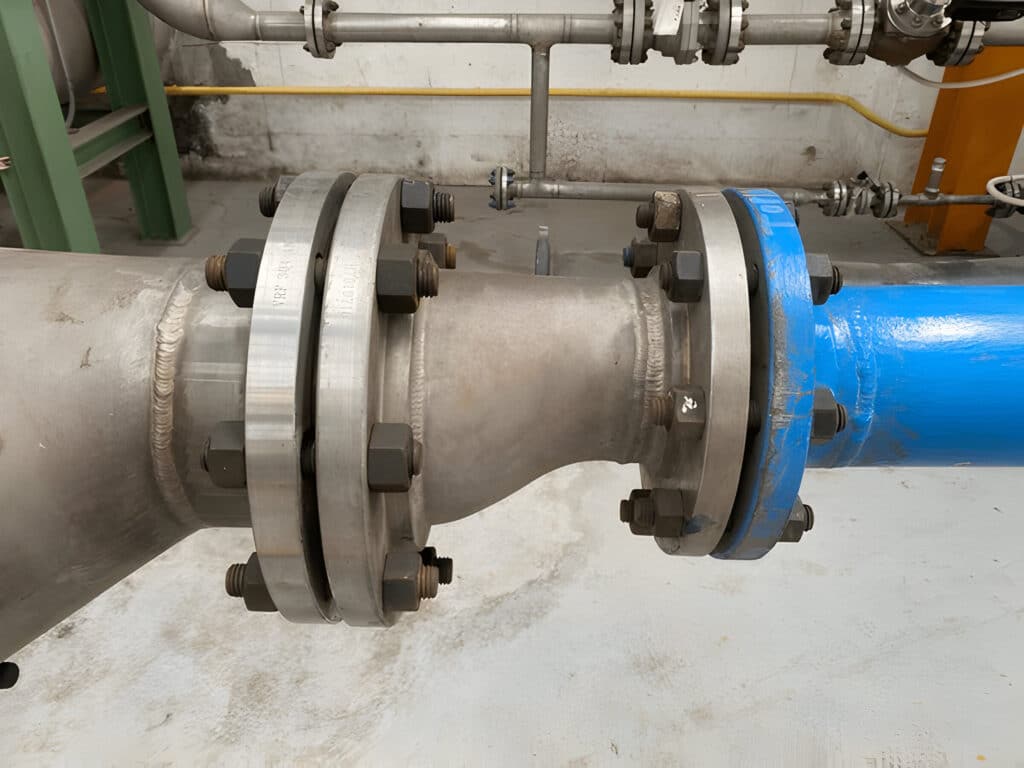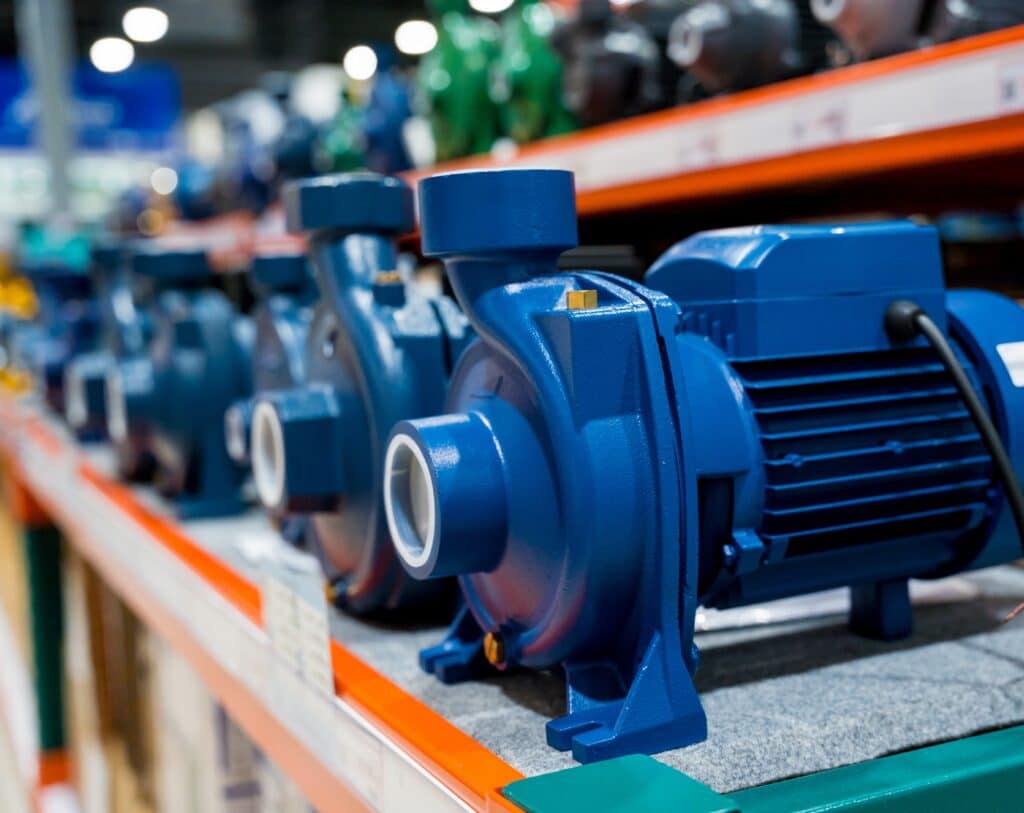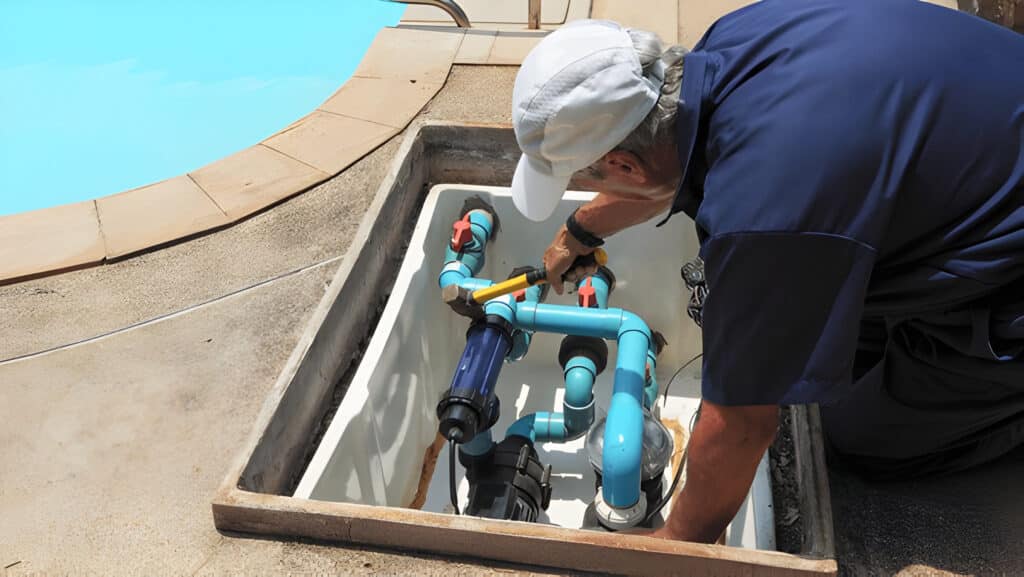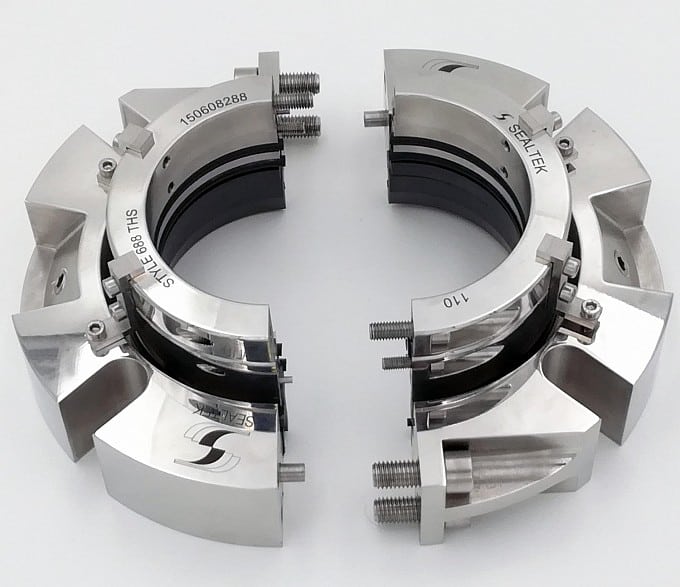
An eccentric reducer is a type of pipe fitting that connects two pipes of different diameters, with the top or bottom of the reducer being flat and the center offset.
In pump suction applications, eccentric reducers are used to transition from a larger pipe size to the smaller diameter of the pump inlet, while minimizing flow disturbances and the formation of air pockets.
Purpose of Eccentric Reducers in Pump Suction
The primary purpose of using eccentric reducers in pump suction is to optimize the flow conditions entering the pump, ensuring efficient and stable operation. Here are the key reasons why eccentric reducers are essential:
Prevention of Air Pockets and Cavitation
When a liquid flows through a concentric reducer, there is a risk of air or vapor pockets forming at the top of the pipe due to the sudden change in diameter. These air pockets can lead to cavitation, where the vapor bubbles collapse and cause damage to the pump impeller and casing. Eccentric reducers, when installed correctly, prevent the formation of these air pockets by maintaining a continuous slope in the piping.
Ensuring Uniform Velocity Profile at Pump Inlet
Pumps operate most efficiently when the fluid enters the impeller with a uniform velocity profile across the pipe cross-section. Eccentric reducers help to gradually transition the flow from the larger pipe to the pump inlet, minimizing turbulence and ensuring a more uniform velocity distribution. This uniform flow profile reduces wear on the impeller and improves overall pump performance.
Minimize Accumulation of Air Bubbles That Reduce Flow Area
In some cases, small amounts of air can be present in the liquid being pumped. If these air bubbles accumulate in the suction piping, they can reduce the effective flow area, leading to decreased pump performance and potential damage. Eccentric reducers, when installed with the flat side on top (for systems with the supply below the pump), allow any air bubbles to continue flowing towards the pump inlet rather than accumulating in the piping.
Correct Orientation of Eccentric Reducers
Supply above Pump: Install with Flat Side on Bottom
When the supply is above the pump, the eccentric reducer should be installed with the flat side on the bottom. This orientation ensures that any air or vapor pockets that form will be directed towards the top of the pipe and continue flowing towards the pump inlet.
Supply below Pump: Install with Flat Side on Top
In systems where the supply is below the pump, the eccentric reducer should be installed with the flat side on top. This configuration allows any air bubbles to continue flowing along the top of the pipe towards the pump inlet, preventing their accumulation in the suction piping.
Long Horizontal Runs: Install with Flat Side on Top to Avoid Air Pockets
For long horizontal pipe runs, it is recommended to install eccentric reducers with the flat side on top, even if the supply is above the pump. This orientation helps prevent the formation and accumulation of air pockets along the length of the piping, which could otherwise lead to reduced performance and potential damage to the pump.
Impact of Improper Suction Design on Pump Performance
- Noisy Operation, Turbulence and Friction Losses: Improper suction piping design can result in turbulent flow and increased friction losses, leading to noisy operation and reduced efficiency.
- Reduced Flow and Head from Inlet Flow Disturbances: Non-uniform velocity profiles and flow disturbances at the pump inlet can decrease the pump’s flow rate and head, compromising its performance.
- Random Axial Load Oscillations: Uneven flow conditions can cause fluctuations in the axial loads on the pump shaft, leading to vibration and potential mechanical damage.
- Mechanical Seal and Bearing Failure from Vibration: Excessive vibration resulting from improper suction design can cause premature failure of mechanical seals and bearings, leading to costly repairs and downtime.
- Cavitation Damage to Impeller and Casing from Vapor Bubble Collapse: Vapor bubbles formed due to improper suction conditions can collapse violently, causing pitting and erosion of the pump impeller and casing.
- Occasional Damage on the Discharge Side Due to Liquid Separation: In some cases, the effects of poor suction design can extend to the discharge side of the pump, causing liquid separation and potential damage to downstream components.
When to Use Eccentric Reducer?
Eccentric reducers should be used in the following situations:
- When connecting a larger suction pipe to a smaller pump inlet
- In systems with long horizontal pipe runs to prevent air pocket formation
- When space constraints make it difficult to use a concentric reducer
- In applications where minimizing flow disturbances and ensuring uniform velocity profiles are critical for pump performance
How to Install an Eccentric Reducer
To install an eccentric reducer correctly, follow these steps:
- Determine the correct orientation based on the system layout (flat side on bottom for supply above pump, flat side on top for supply below pump or long horizontal runs)
- Ensure that the eccentric reducer is the appropriate size to match the pipe and pump inlet diameters
- Clean the pipe ends and the reducer to remove any debris or burrs
- Align the eccentric reducer with the pipe ends, ensuring that the flat side is in the correct orientation
- Weld or bolt the reducer in place, following the manufacturer’s instructions and applicable codes and standards
- Inspect the installation to verify proper alignment and orientation
Eccentric Reducer vs. Concentric Reducers
While eccentric reducers are the preferred choice for pump suction applications, concentric reducers may be used in certain situations. Here’s a comparison of the two types:
Eccentric Reducers:
- Offset design minimizes the formation of air pockets
- Promotes uniform velocity profile at pump inlet
- Recommended for pump suction applications
Concentric Reducers:
- Symmetrical design with a gradual reduction in diameter
- Can be used in applications where air pockets are not a concern
- May be suitable for discharge piping or non-critical flow applications
Design Considerations for Suction Piping
- Provide Sufficient Straight Pipe Length before Pump Inlet (Typically 5+ Pipe Diameters): A straight run of pipe upstream of the pump inlet helps to ensure a uniform velocity profile and minimize flow disturbances.
- Avoid Flow Disturbing Fittings Close to the Pump Suction Flange: Elbows, valves, and other fittings should be located sufficiently far upstream of the pump inlet to allow flow stabilization.
- Size Reducer to Keep Fluid Velocity below Erosion Limits: The eccentric reducer should be sized to maintain fluid velocities below the erosion limits of the piping material, preventing excessive wear and damage.
FAQs
Can We Use Eccentric Reducer in Pump Discharge?
While eccentric reducers are primarily used in pump suction, they can be used in pump discharge if there are concerns about flow separation or non-uniform velocity profiles. However, in most cases, concentric reducers are sufficient for discharge piping.
Which reducer is used in pump suction?
Eccentric reducers are the preferred choice for pump suction applications due to their ability to minimize air pockets and ensure uniform velocity profiles at the pump inlet.





